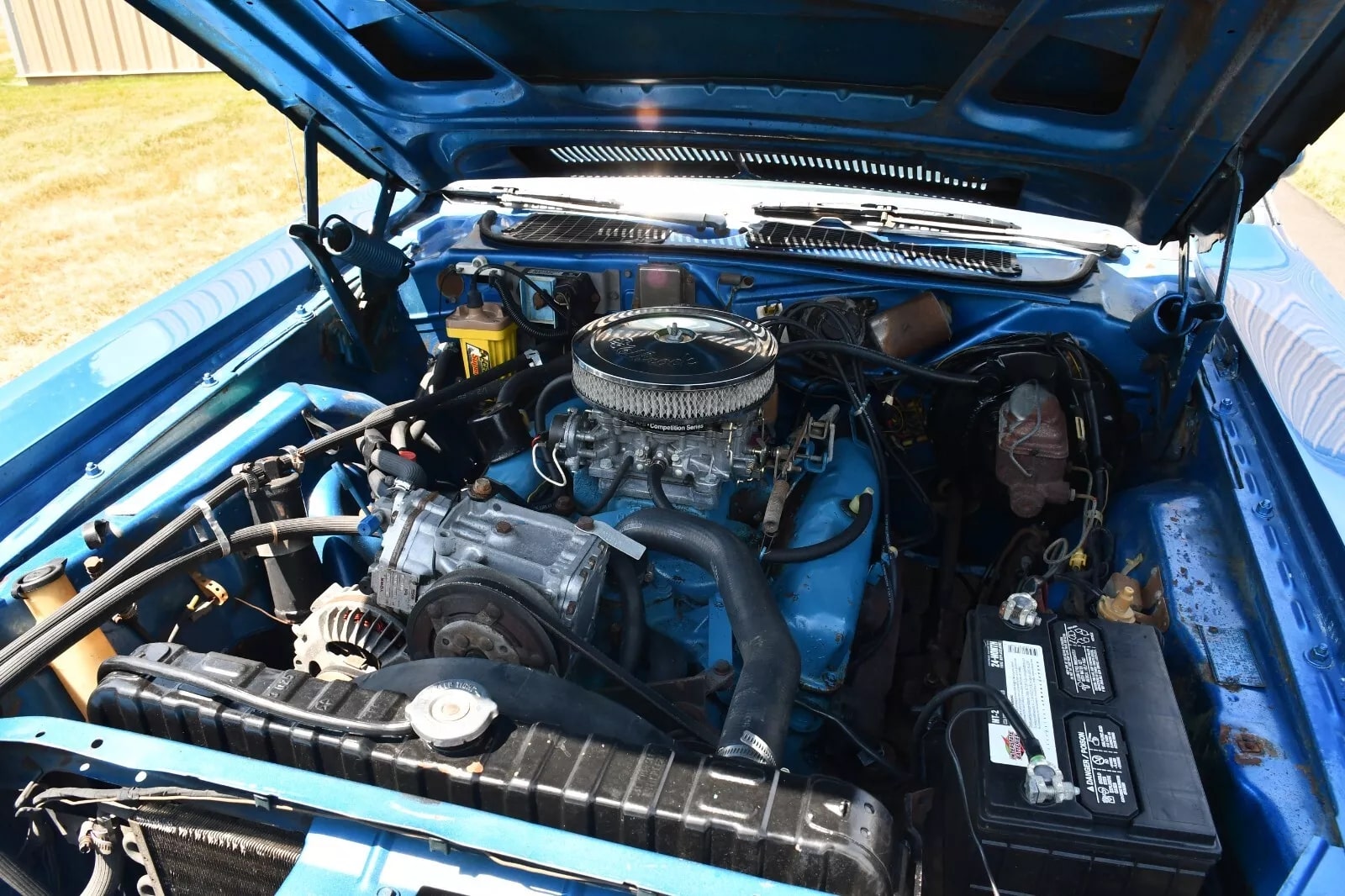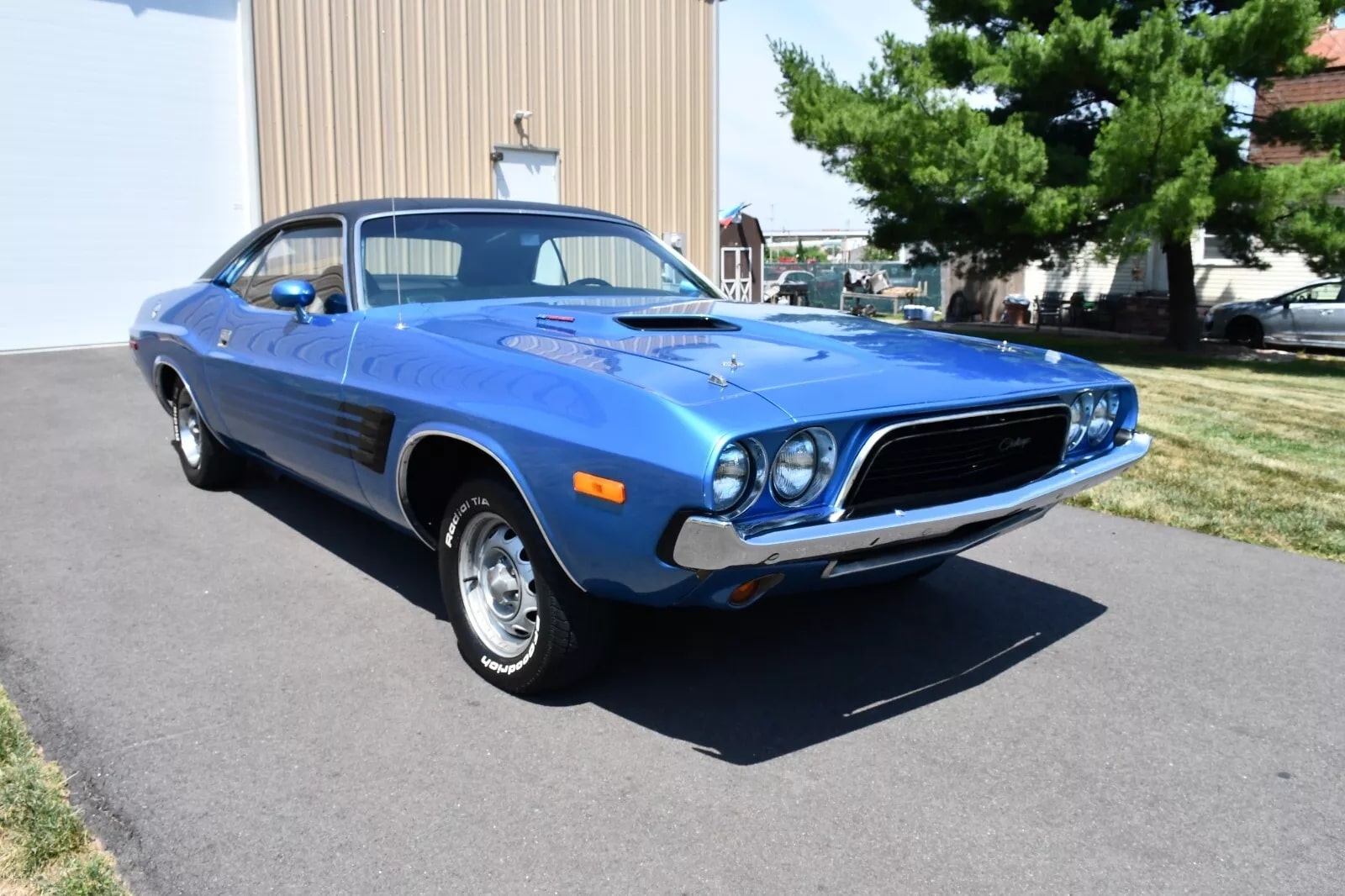A significant shift arrived in 1970 with the introduction of the third-generation Plymouth Barracuda.
This iteration marked a true dedication to performance, ditching the shared platform of previous generations for the all-new E-body.
This innovative platform, designed specifically for high-powered vehicles, wasn’t just for the Barracuda. Capitalizing on this shared muscle car foundation, Dodge debuted the Challenger alongside it.
The Challenger slotted perfectly between the compact Dart and the midsize Charger, boasting a head-turning design that hinted at the thrilling potential lurking beneath the hood.
Unlike their legendary 1970-1971 counterparts, the 1972-1974 Dodge Challengers often get relegated to the sidelines of muscle car history.
However, dismissing these later models would be a mistake. True, the muscle car had shifted by the early 70s, with stricter emissions regulations taming the ferocious engines of the prior years. But that doesn’t mean these Challengers lacked muscle.

Even the base 1972 model packed a 318 cubic-inch V8, a potent powerplant in its own right. For those craving more exhilarating performance, Dodge offered the 340 cubic-inch V8, which reigned supreme for two years delivering over 240 horsepower.
In the Challenger’s final year of 1974, the 360 cubic-inch V8 took the reins, offering a slight power bump and becoming a rare collectible due to its limited production run.
Though they may not boast the earth-shattering horsepower figures of their predecessors, the 1972-1974 Challengers still hold a significant place in the muscle car story, representing an era of adaptation and innovation in a changing automotive.
Cruising the classic car scene doesn’t always demand the rarest rides. Take, for instance, the 1973 Dodge Challenger with a 340-cubic-inch V8 nestled under the hood and a smooth three-speed automatic transmission.
While not the most limited edition out there, these Challengers hold an undeniable charm. This particular E5 Blue beauty boasts an impressive pedigree a numbers-matching car, signifying that the engine and transmission are original to the vehicle.
Although it likely received a repaint at some point in its life, the condition remains surprisingly well-preserved for a car of its age.
The interior, in particular, seems to be in fantastic shape, a testament to the enduring quality of classic car design.
The odometer displays 71,087 miles, but its authenticity remains unconfirmed. Regardless, this shouldn’t be a major turnoff for potential buyers.
The current no-reserve bid sits at $23,100, and the market average typically maxes out around $35,000.
This Challenger presents a compelling opportunity for enthusiasts to acquire a piece of muscle car history, and a chance to own a car that delivers a thrilling driving experience wrapped in a timeless design, all at a relatively accessible price point.

